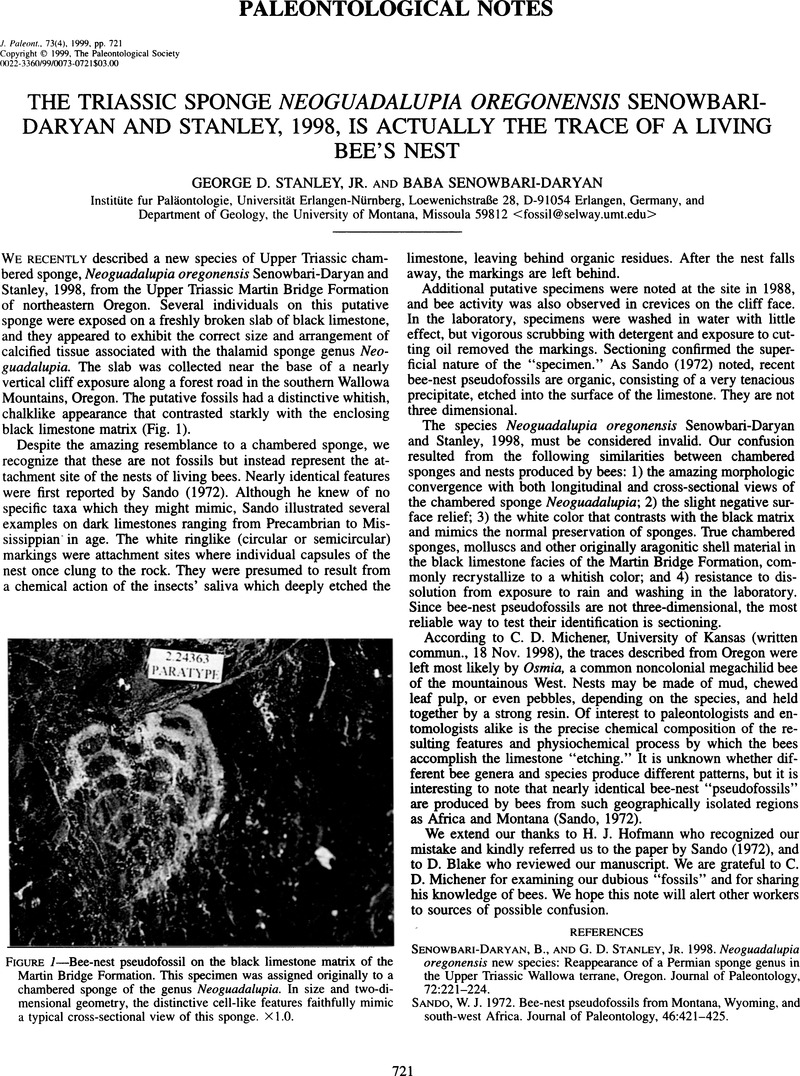No CrossRef data available.
Article contents
The Triassic sponge Neoguadalupia oregonensis Senowbari-Daryan and Stanley, 1998, is actually the trace of a living bee's nest
Published online by Cambridge University Press: 14 July 2015
Abstract
An abstract is not available for this content so a preview has been provided. Please use the Get access link above for information on how to access this content.

- Type
- Paleontological Notes
- Information
- Copyright
- Copyright © The Paleontological Society
References
Senowbari-Daryan, B., and Stanley, G. D. Jr. 1998. Neoguadalupia oregonensis new species: Reappearance of a Permian sponge genus in the Upper Triassic Wallowa terrane, Oregon. Journal of Paleontology, 72:221–224.CrossRefGoogle Scholar
Sando, W. J. 1972. Bee-nest pseudofossils from Montana, Wyoming, and south-west Africa. Journal of Paleontology, 46:421–425.Google Scholar


